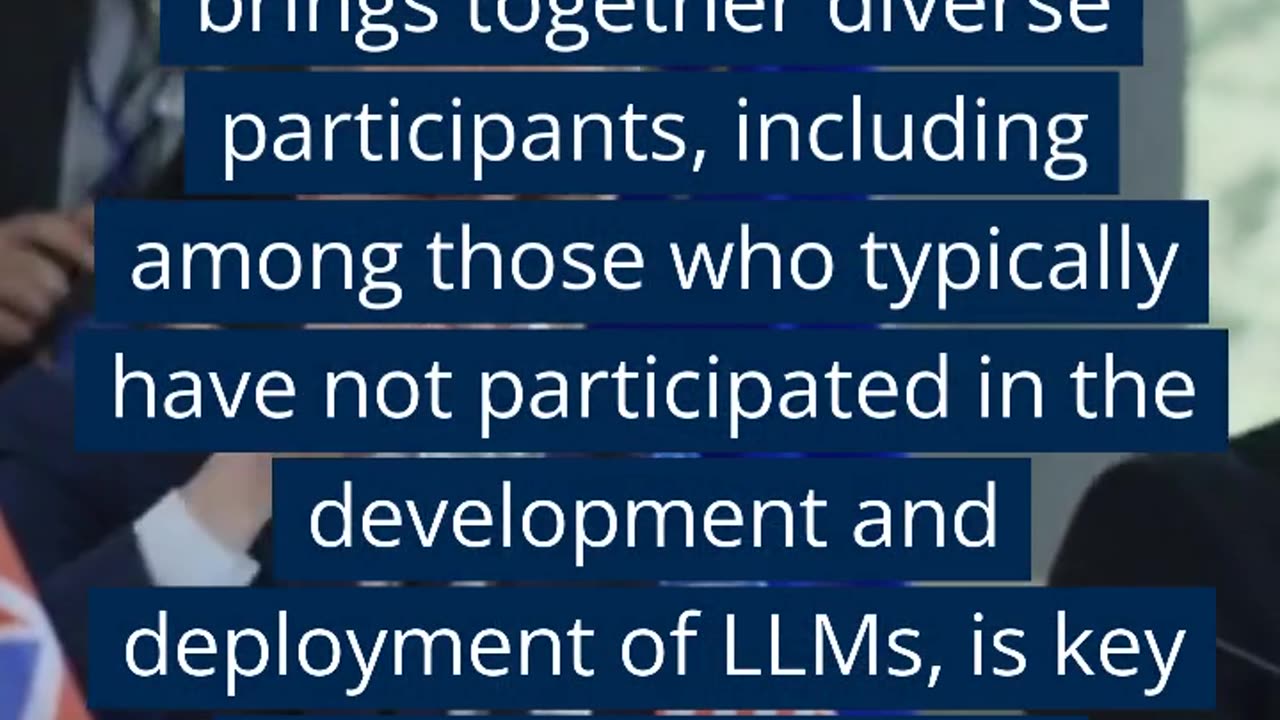Premium Only Content

AI challenges Humans, are humans ready
The GRT Challenge: Red-Teaming with GPT-4
The GRT Challenge, a significant initiative announced by the Biden-Harris administration in May, has garnered considerable attention and support from various quarters, including the White House Office of Science, Technology, and Policy (OSTP). This challenge aligns closely with the objectives laid out in the Biden-Harris Blueprint for an AI Bill of Rights and the NIST AI Risk Management Framework. Moreover, it's set to become an integral part of educational programming for the Congressional AI Caucus and other high-ranking officials.
Understanding the GRT Challenge
The GRT Challenge, which stands for "Generating Red Teams," aims to harness the potential of cutting-edge AI models to enhance the security and resilience of complex systems. This ambitious endeavor involves utilizing advanced AI capabilities to simulate adversarial scenarios, identify vulnerabilities, and devise robust strategies to mitigate risks effectively.
GPT-4's Role in Red-Teaming
An OpenAI spokesperson has confirmed that GPT-4, the latest iteration of OpenAI's renowned language model, will play a pivotal role in the GRT Challenge. GPT-4's remarkable language generation and comprehension capabilities make it an ideal candidate for assisting in red-team simulations.
How GPT-4 Enhances Red-Teaming
GPT-4's exceptional ability to process and understand vast amounts of data allows it to simulate a wide range of potential threat scenarios. It can analyze intricate patterns, identify weaknesses, and propose innovative solutions, thereby significantly augmenting the effectiveness of red-teaming efforts.
The Significance of the GRT Challenge
The GRT Challenge holds immense significance in the realm of AI, cybersecurity, and policy-making. It represents a proactive approach to staying ahead of emerging threats and bolstering the security of critical systems.
Bridging the Gap between Technology and Policy
By incorporating the GRT Challenge into the educational programming for the Congressional AI Caucus and other officials, the administration is fostering a deeper understanding of the dynamic interplay between technology and policy. This alignment ensures that decision-makers have the necessary insights to create effective regulations and strategies.
Advancing the AI Bill of Rights
The GRT Challenge aligns seamlessly with the goals outlined in the Biden-Harris Blueprint for an AI Bill of Rights. It emphasizes the importance of responsible AI use, transparency, and the safeguarding of individual rights in the face of advancing technology.
Strengthening the NIST AI Risk Management Framework
The NIST AI Risk Management Framework serves as a crucial guideline for managing the risks associated with AI deployment. The GRT Challenge complements this framework by providing real-world simulations and insights, enhancing its effectiveness in addressing emerging threats.
Implications for the Future
The GRT Challenge sets a precedent for proactive collaboration between government agencies, technology leaders, and policymakers. This approach not only enhances our ability to anticipate and mitigate risks but also encourages responsible AI development and deployment.
In conclusion, the GRT Challenge, supported by the Biden-Harris administration and endorsed by the White House OSTP, holds immense promise for bolstering our cybersecurity efforts. With the integration of GPT-4 and its powerful AI capabilities, the challenge is poised to make significant strides in the realm of red-teaming. By fostering collaboration and knowledge-sharing among key stakeholders, we can create a more secure and resilient technological landscape.
-
 LIVE
LIVE
TheSaltyCracker
2 hours agoMedia Silent on Metro Attack ReeEEStream 9-07-25
26,029 watching -
 LIVE
LIVE
SpartakusLIVE
7 hours agoMega SOLO Spartan Stream - 12 hours?! HA || Variety Later?!
2,073 watching -

Sarah Westall
3 hours agoEnd of Aging, Hydrogen Bomb Research, Serial Killers & Violent Behavior, Bipolar Research w/Dr Walsh
5.38K1 -
 LIVE
LIVE
MattMorseTV
4 hours ago $8.96 earned🔴Sunday Gaming🔴
1,078 watching -
 LIVE
LIVE
Joker Effect
1 hour agoINTERVIEWING Rumble Gaming community members: Viewbotting and how they see the current landscape.
465 watching -
 1:45:53
1:45:53
Nerdrotic
4 hours ago $9.04 earnedUnravelling the Secrets of Skinwalker Ranch | Forbidden Frontier #115
55.8K4 -
 41:56
41:56
Athlete & Artist Show
4 hours ago $0.27 earnedAustin Ekeler: Going From "0 Star Recruit" To Leading The NFL In TD's, New Fan App | FROM THE VAULT
7.53K1 -
 2:46:49
2:46:49
Barry Cunningham
9 hours agoNOW THEY FEAR US! | RFKJR STRIKES BACK | JD VANCE ON PRESIDENT TRUMP | AND MORE NEWS!
51.6K32 -
 LIVE
LIVE
Spartan
4 hours agoCharlotte Qualifier watch party + Ranked and Expedition 33
123 watching -
 6:09:54
6:09:54
bigbossrobinson
7 hours agoLIVE - DOUBLE IMPACT - RESIDENT EVIL 4 & METAL GEAR SOLID Δ: SNAKE EATER
21.8K